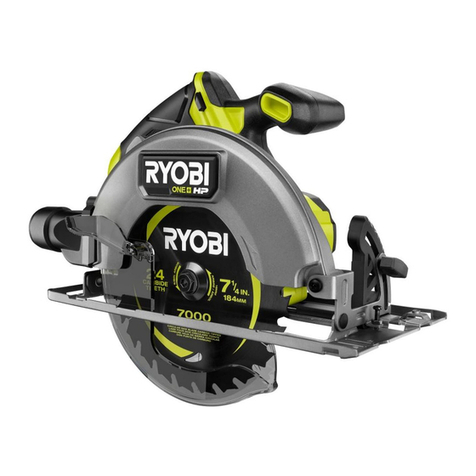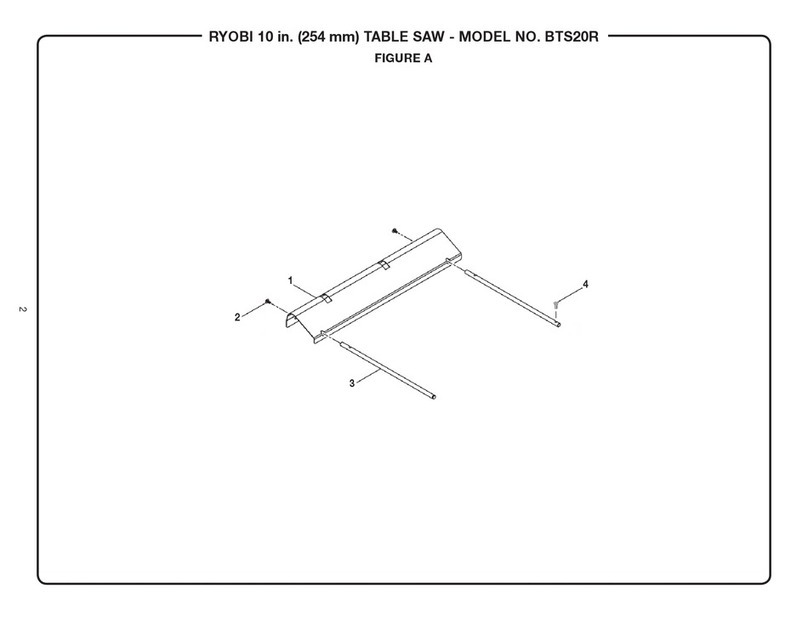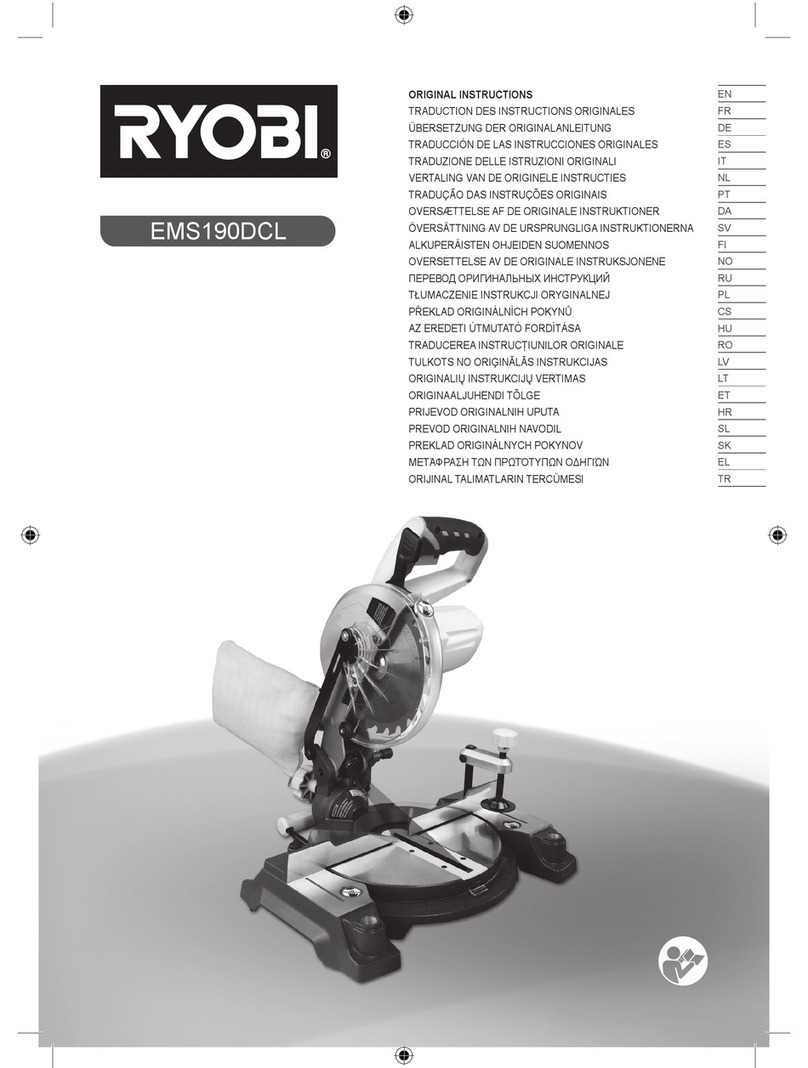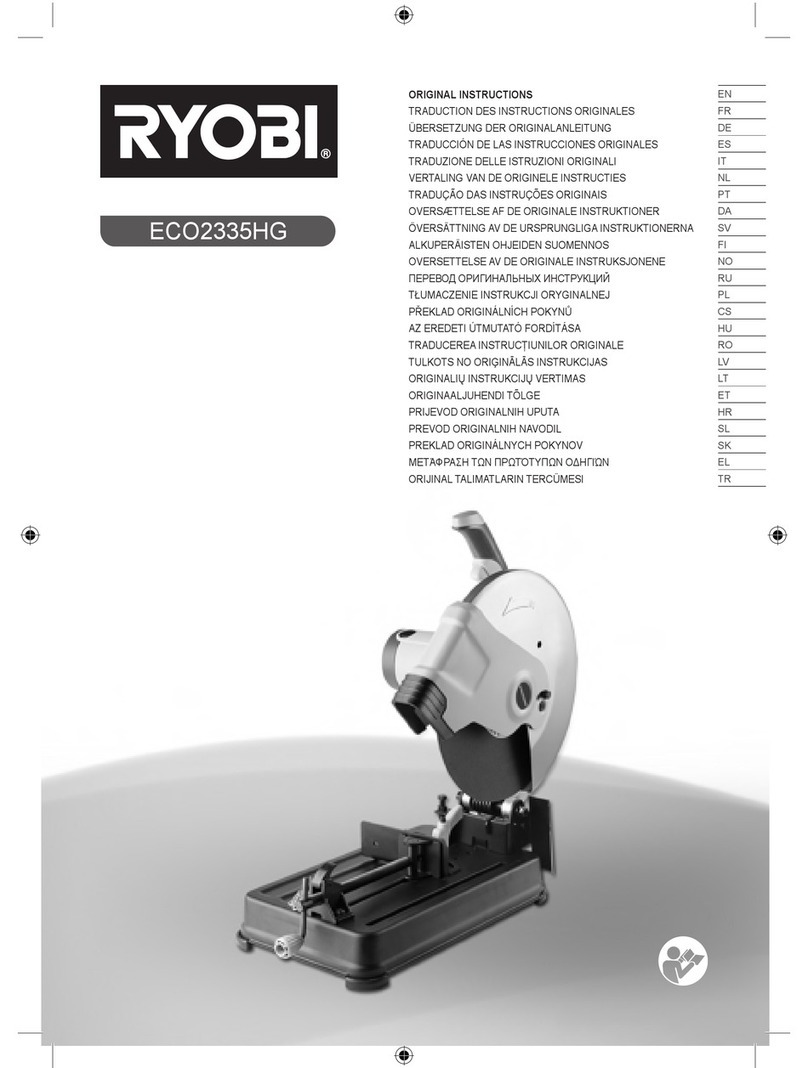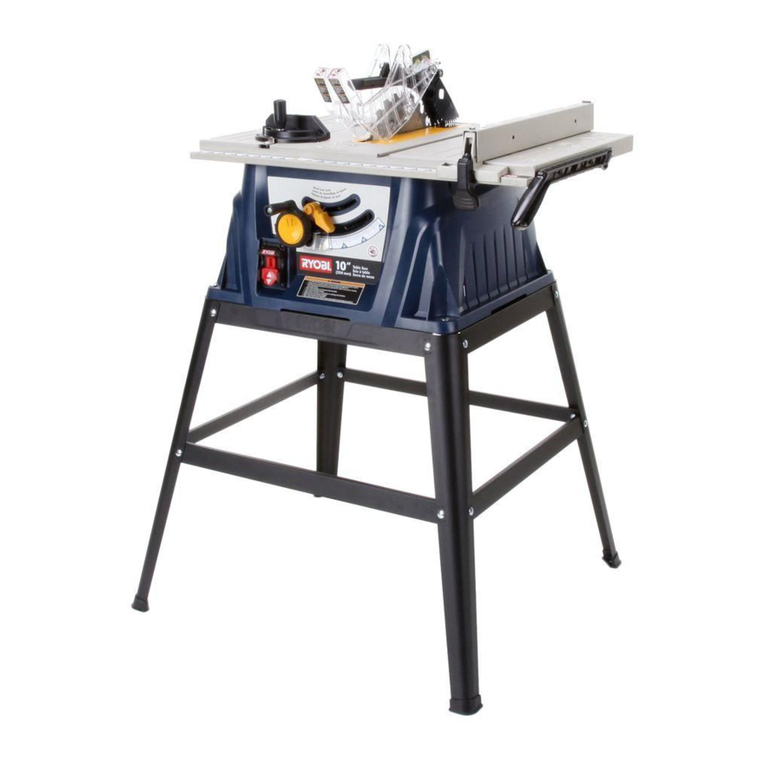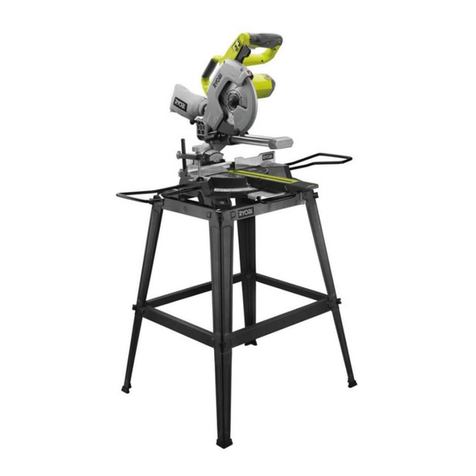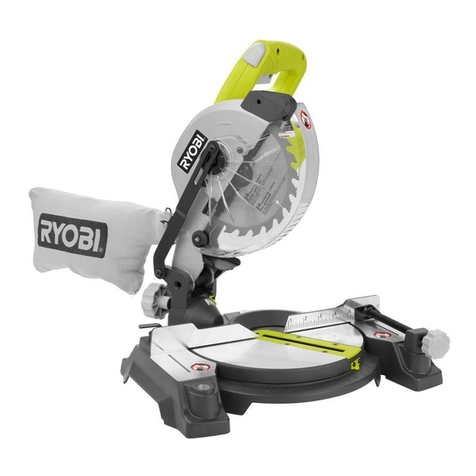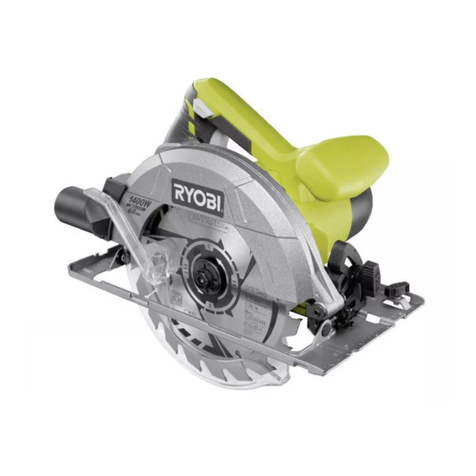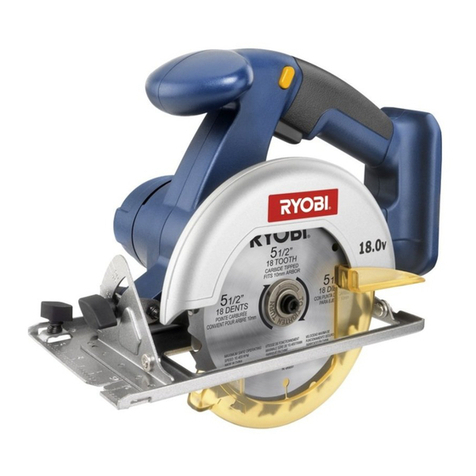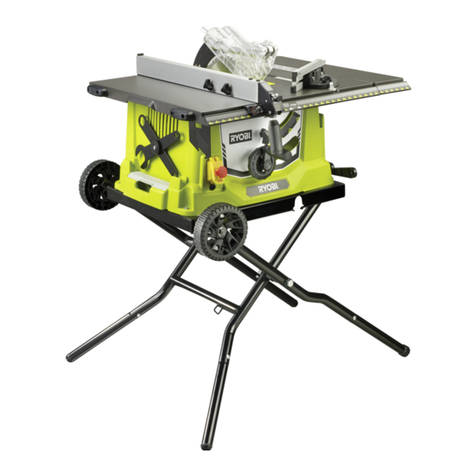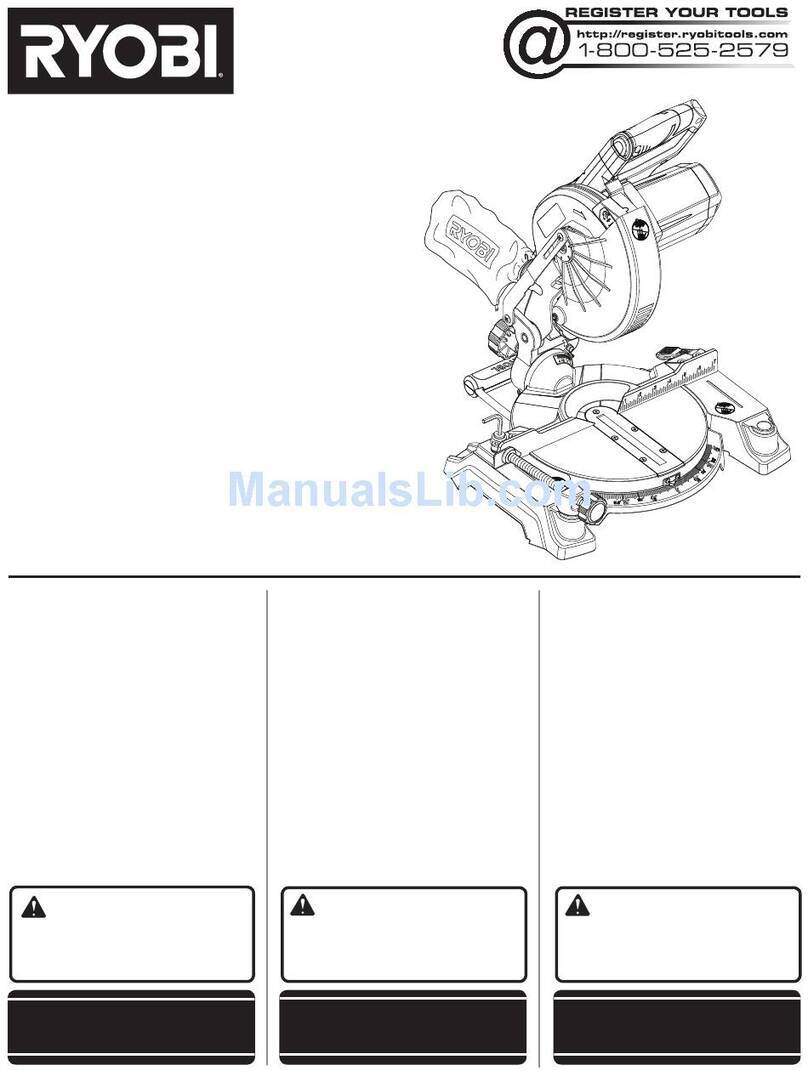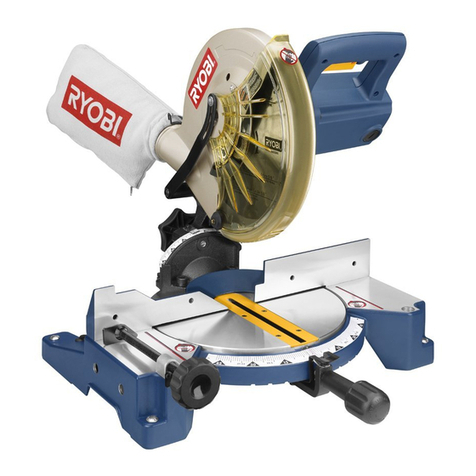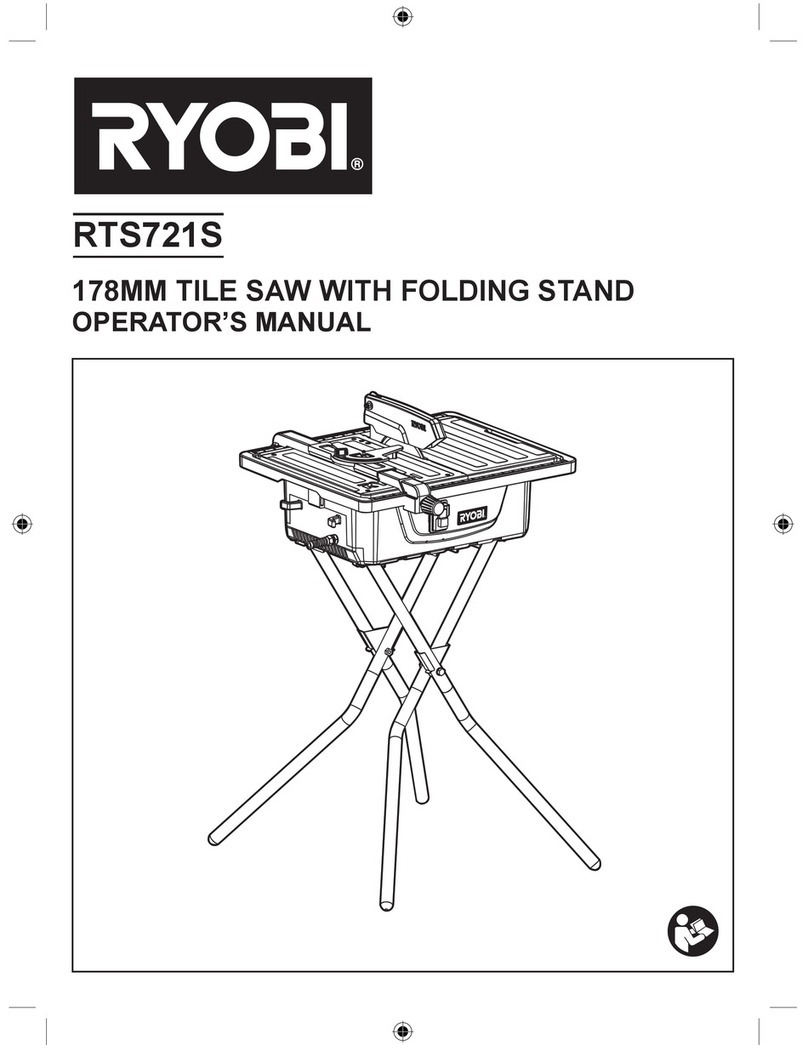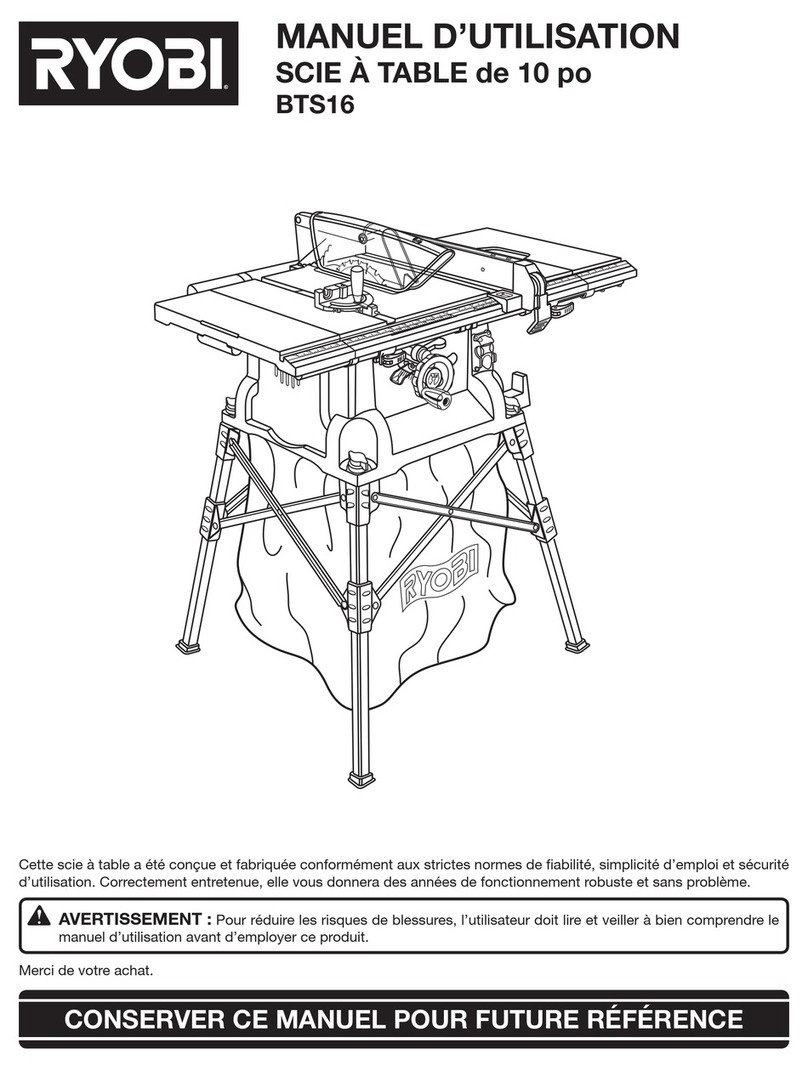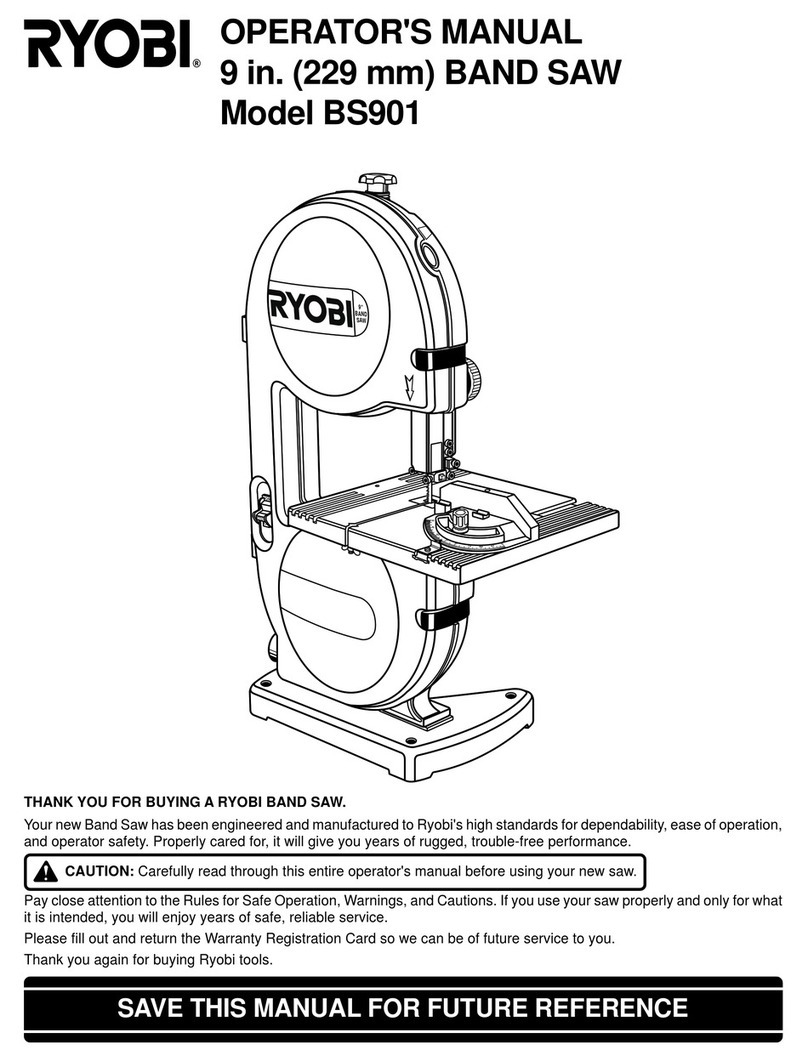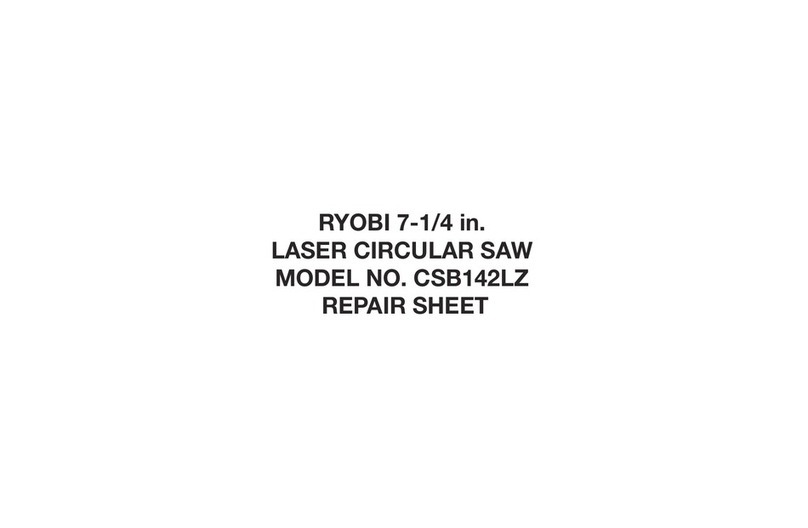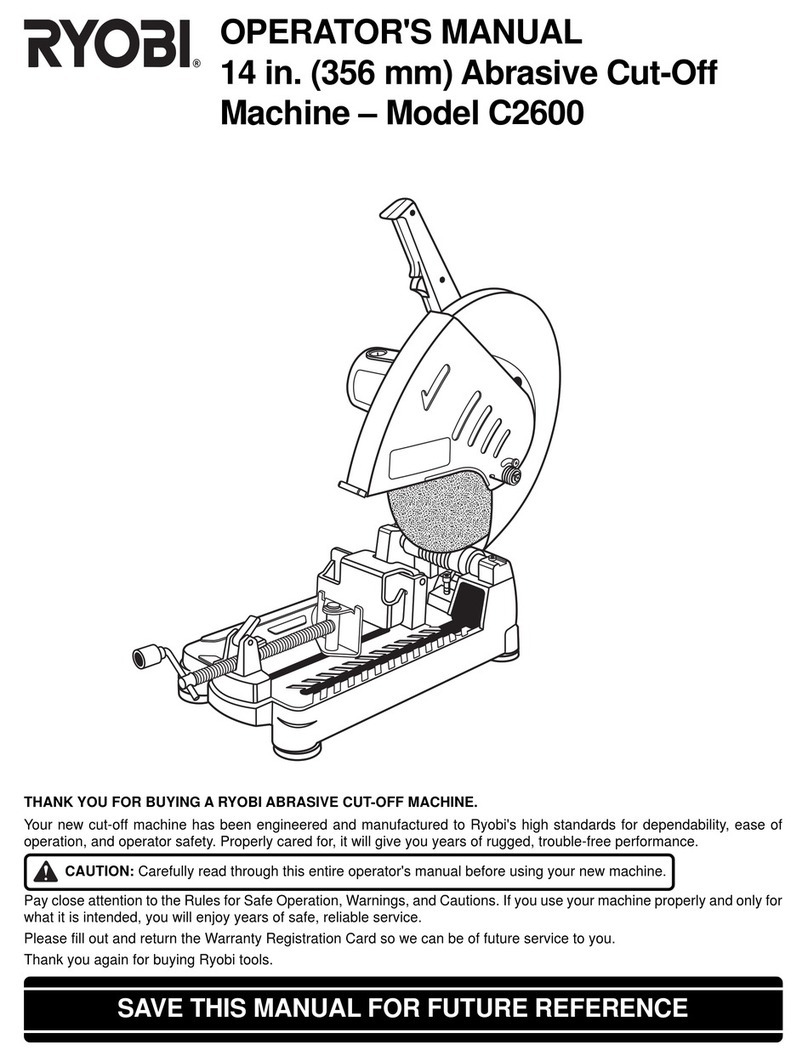
power tool’s operation. If damaged, have the power
tool repaired before use. Many accidents are caused
by poorly maintained power tools.
■Keep cutting tools sharp and clean. Properly
maintained cutting tools with sharp cutting edges are
less likely to bind and are easier to control.
■Use the power tool, accessories and tool bits etc.
in accordance with these instructions, taking into
account the working conditions and the work to
be performed. Use of the power tool for operations
different from those intended could result in a hazardous
situation.
■Keep handles and grasping surfaces dry, clean
and free from oil and grease. Slippery handles and
grasping surfaces do not allow for safe handling and
control of the tool in unexpected situations.
BATTERY TOOL USE AND CARE
■Recharge only with the charger specified by the
manufacturer. A charger that is suitable for one type
of battery pack may create a risk of fire when used with
another battery pack.
■Use power tools only with specifically designated
battery packs. Use of any other battery packs may
create a risk of injury and fire.
■When battery pack is not in use, keep it away from
other metal objects, like paper clips, coins, keys,
nails, screws or other small metal objects, that can
make a connection from one terminal to another.
Shorting the battery terminals together may cause burns
or a fire.
■Under abusive conditions, liquid may be ejected from
the battery; avoid contact. If contact accidentally
occurs, flush with water. If liquid contacts eyes,
additionally seek medical help. Liquid ejected from
the battery may cause irritation or burns.
■Do not use a battery pack or tool that is damaged or
modified. Damaged or modified batteries may exhibit
unpredictable behaviour resulting in fire, explosion or
risk of injury.
■Do not expose a battery pack or tool to fire or
excessive temperature. Exposure to fire or temperature
above 130°C may cause explosion.
■Follow all charging instructions and do not charge
the battery pack or tool outside the temperature
range specified in the instructions. Charging
improperly or at temperatures outside the specified
range may damage the battery and increase the risk of
fire.
SERVICE
■Have your power tool serviced by a qualified repair
person using only identical replacement parts. This
will ensure that the safety of the power tool is maintained.
■Never service damaged battery packs. Service
of battery packs should only be performed by the
manufacturer or authorized service providers.
TILE SAW SAFETY WARNINGS
■The guard provided with the tool must be securely
attached to the power tool and positioned for
maximum safety, so the least amount of wheel is
exposed towards the operator. Position yourself
and bystanders away from the plane of the rotating
wheel. The guard helps to protect operator from broken
wheel fragments and accidental contact with wheel.
■Use only diamond cut-off wheels for your power
tool. Just because an accessory can be attached to
your power tool, it does not assure safe operation.
■The rated speed of the accessory must be at least
equal to the maximum speed marked on the power
tool. Accessories running faster than their rated speed
can break and fly apart.
■Wheels must be used only for recommended
applications. For example: do not grind with the side
of cut-off wheel. Abrasive cut-off wheels are intended
for peripheral grinding, side forces applied to these
wheels may cause them to shatter.
■Always use undamaged wheel flanges that are of
correct diameter for your selected wheel. Proper
wheel flanges support the wheel thus reducing the
possibility of wheel breakage.
■The outside diameter and the thickness of your
accessory must be within the capacity rating of your
power tool. Incorrectly sized accessories cannot be
adequately guarded or controlled.
■The arbour size of wheels and flanges must properly
fit the spindle of the power tool. Wheels and flanges
with arbour holes that do not match the mounting
hardware of the power tool will run out of balance,
vibrate excessively and may cause loss of control.
■Do not use damaged wheels. Before each use,
inspect the wheels for chips and cracks. If power
tool or wheel is dropped, inspect for damage or
install an undamaged wheel. After inspecting
and installing the wheel, position yourself and
bystanders away from the plane of the rotating
wheel and run the power tool at maximum no load
speed for one minute. Damaged wheels will normally
break apart during this test time.
■Wear personal protective equipment. Depending
on application, use face shield, safety goggles or
safety glasses. As appropriate, wear dust mask,
hearing protectors, gloves and shop apron capable
of stopping small abrasive or workpiece fragments.
The eye protection must be capable of stopping flying
debris generated by various operations. The dust mask
or respirator must be capable of filtrating particles
generated by your operation. Prolonged exposure to
high intensity noise may cause hearing loss.
■Keep bystanders a safe distance away from work
area. Anyone entering the work area must wear
personal protective equipment. Fragments of
workpiece or of a broken wheel may fly away and cause
injury beyond immediate area of operation.
■Hold the power tool by insulated gripping surfaces
only, when performing an operation where the
cutting accessory may contact hidden wiring.
Cutting accessory contacting a “live” wire may make
exposed metal parts of the power tool “live” and could
give the operator an electric shock.
■Never lay the power tool down until the accessory
has come to a complete stop. The spinning wheel
may grab the surface and pull the power tool out of your
control.
3

